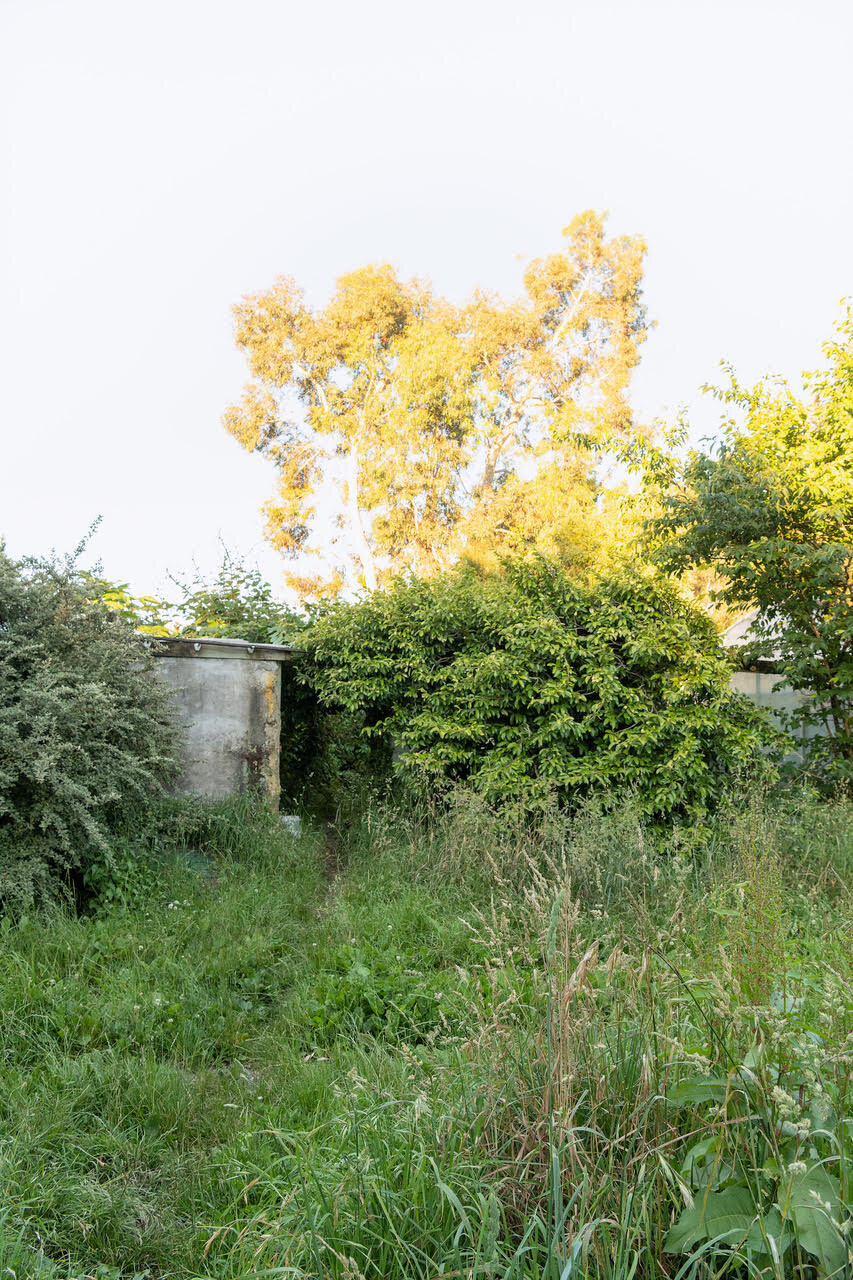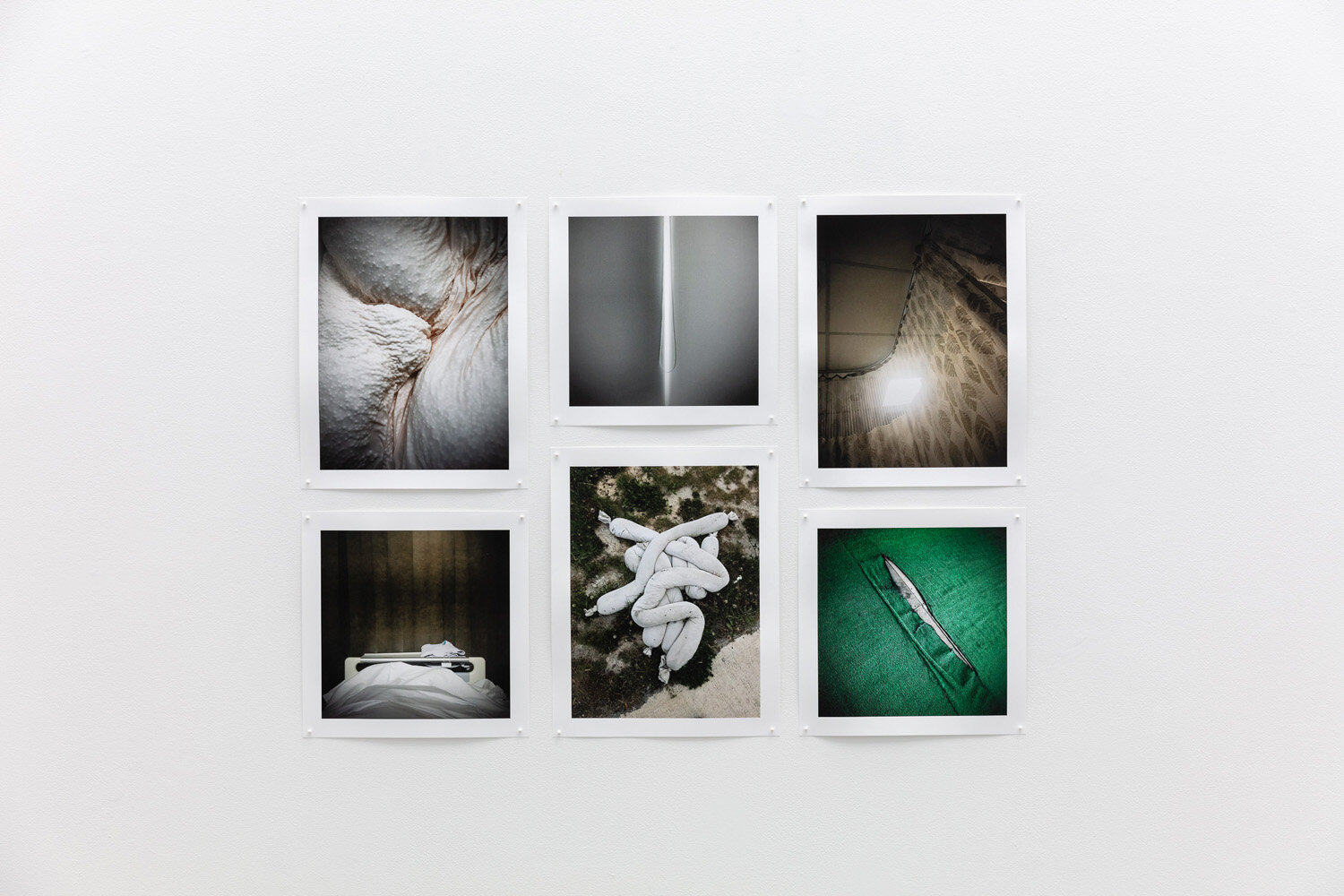mother lode & Quicken - reviewed
mother lode
Ann Shelton
Bartley & Company Art, Wellington
22 July – 15 August 2020
and
Quicken
Poppy Lekner, Briarna Martelletti, Johanna Mechen, Mizuho Nishioka, Maria Sainsbury, Deidra Sullivan & Virginia Woods-Jack. Curated by Caroline McQuarrie and Jane Wilcox
The Engine Room, Wellington
22 July — 14 August 2020
Reviewed by Connie Brown for PhotoForum, 12 September 2020
In Zurich, from certain traffic islands, and from the tiny frills of dirt at the base of some traffic lights, clusters of meadow sage and groves of hollyhocks in fuchsia and plum gush forth—little moments of fragrance and colour in a city whose grey is otherwise modulated only by advertisements for luxury watches and Lindt chocolate, and carefully maintained (read: contained) municipal parks. These moments are the handiwork of Maurice Maggi—his graffiti tag, if you will.
For the past thirty-years, Maggi has been walking around his home city equipped with a sack of seeds. He scatters their contents by the liberal handful, willing them to lodge themselves anywhere there is a crack in the concrete, and crack it open just a little bit further, much to the dislike of Zurich’s council gardeners.
I am reminded of Maggi’s floral anarchism while looking at the images of the Wairarapa Eco Farm featured in Ann Shelton’s latest body of work, mother lode. Each of the ten images offers a view from within the farm, a site crowded by trees, overgrown grass and discarded bracken, of golden-hour sunlight, tentative pathways and several rogue eruptions of cavolo nero. While the images are very much consumed by this wild landscape, I imagine how the farm must look from outside or above, nestled amongst the ploughed and apportioned cattle lots that prevail in the region. I imagine it, like Maggi’s flowers, bleeding lusciously into its surrounds. Like a crack in the pastures.
And so it is that Shelton perceives this place from which she has purchased her eggs and vegetables for the past thirteen years: “as a tiny salve on the open wound of the climate emergency” [1] that models an alternative to mainstream agricultural systems based in community support and biodynamic principals. mother lode pays tribute to the farm’s mission whilst also delving further into the relationship between plants, history and knowledge systems that the artist has already, adeptly laid out in series such as the missionaries and jane says.
Where the hyper-composed forms and traditions of floristry served as a point of entry into this relationship in these prior series (as means of suggesting artifice and something lurking beneath), in mother lode, Shelton effectively tills the photographic surface. She makes it lumpy and porous, aerates it, and brings the ‘something lurking’ and a glut of other microscopic content closer to the light.
In mother lode, Shelton enacts a sort of decomposition on the photograph which, as in soil, is just as much a process of renewal as it is of decay.
Ann Shelton, mother lode, installation photograph at Bartley + Company Art
The images are unruly, containing so much to look at yet nothing to focus on. Shelton deliberately errs away from the renaissance perspective through which gardens are typically represented in art. That is, away from measured out lawns, heliocentric water features and bushes trimmed into impossible geometries—all things Shelton would consider part of our “aesthetically based relationship with garden landscapes.”[2]
Before Shelton’s decomposed garden-scapes, I am asked not to look at the scenes so much as I am asked to fossick and forage through them, unsure of what I am looking for. The wildness of the images leaves me searching for some small details that might give the images form: some familiar crops, maybe, or a pair of forgotten gardening gloves, or the flash of a pīwakawaka’s white belly. With an eye out for these things, but without any indication from Shelton as to where or even if I might find them, I am forced to take in the whole. The shape of certain leaves and shafts of light, for example, or how the light engulfs the border between a tree’s outer reaches and the sky in the same way vining plants and lichen claim the water pylon in Untitled (Sol, Sinorhizobium). All things I might have missed were there a clear, well-weeded path for my eye to follow.
To forage is to gather up fragments, and to come into brief contact with the elusive complex that they are fragments of. Its principal delight is that of unexpected encounters and discoveries. Arguably, we can tend to be weary of these processes and removed from this delight when it comes to viewing art. Arguably, too, it is a joy we have lost when it comes to our food; neither the monocrop mega-farms in which most of it is grown, nor the supermarket aisles in which most of it is purchased encourage the curiosity, experimentation, resourcefulness, dynamism – or the willingness to climb trees to reach the best fruit – that are inherent in the practice of foraging.
Ann Shelton, mother lode, installation photograph at Bartley + Company Art.
mother lode, then, resists the rationalisation of both the art encounter and agricultural systems. It invites us instead to metaphorically play in the dirt, and ask what is to be discovered there, hidden beneath the bracken? The exhibition foregrounds the Community Supported Agriculture scheme employed by the Wairarapa Eco Farm as one such buried and marginalised possibility, it representing a form of farming that is both economically viable and ecologically sound.
But more than that, the works in mother lode underscore a sort of general and all-pervading abundance, some of which we can see if we look closely, some of which we must be content to just sense.
The ‘mother lode’ here is not the single abounding vein in the mine – and is not, therefore, something that can be extracted. It is the golden sheets of the sun that rises every day and makes things grow; it is the rotting, regenerating soil that warmly welcomes the seeds. It is the cracks in the concrete and in the pastures.
*
As Shelton asks us to get our hands in the dirt, the seven artists who contribute to Quicken also ask us to consider the multisensory capacities of the photograph.
Deidra Sullivan, Serendipidy, Quicken
This exhibition, curated by Caroline McQuarrie and Jane Wilcox and hosted at the Engine Room, interrupts the flow of the endless-scroll—of the hand-held, double-tap encounters that have come to dominate our experience of photography. Standing against photographic theory which ranks optical experience above all other sensory registers, too, Quicken emphasises the acts of touch and tactile qualities that mediate – and enrich, the exhibition argues – our relationship to photographs.
These acts and qualities take many forms. For Deidra Sullivan and Poppy Lekner, touch exists in the photographic process itself, where light embraces the photosensitive surface. Though this, as McQuarrie and Wilcox remind us in their overview of the exhibition, is a crucial, inevitable aspect of any photography, it is particularly raw in the work of these two artists, both of whom experiment with cameraless techniques.
In a triptych by Sullivan placed in the gallery’s foyer, various blue, green and purple-hued markings bleed into one another, emanating, impossibly, a sort of bioluminescence from their mounting on the white wall. For their translucency, the forms seem to have originated in the twilight zone of the ocean, or a Helen Frankenthaler painting, or some other alien place where the distinction between liquid and solid doesn’t hold firm.
Poppy Lekner, from the series Věda Subjektive, Quicken
Similar effects are at play in Lekner’s photograms, though the black-and-white miniature prints, laid out in a vitrine like individual specimens, feel more forensic than they do extra-terrestrial. The object of study in the works is light itself: how it pours through or deviates around the trinkets Lekner places in its path.
Both of these offerings make visible the light touch of light upon surface, and attest to the endless variations and mutations that can result from this meeting. But as well as this, they also make evident the presence of the artists’ own touch. Through their use of analogue techniques, Sullivan and Lekner highlight the tactile qualities inherent to the creation of the photograph, and the importance of the maker’s choices and gestures within it. From the placement of an object or substance on paper, to exposing that arrangement to light and developing the image in chemical baths, all are acts of unfettered attention and tenderness.
And just as touch is embedded in the photographic process, it is embedded, and unmatched, in the medium’s social functions, too. Though assimilated into the endless-scroll/hand-held/double-tap matrix, the snapshot has an important place in our personal historiographies.
Briarna Martelletti, from the series The time, being. L to R At Dusk, To Hold, Depart and Together, Quicken
Photography, for all it has done to the nature of image making, has also been a way to document and buttress our most intimate moments. Briarna Martelletti shares some of these moments in the five works she presented in the show. Her affection for and closeness to her subjects is clear, evident in the care taken to compose, light and focus the shots. But while the images speak unambiguously of intimacy, with their backs turned on the camera and on the viewer, Martelletti’s subjects maintain a certain ambiguity, too. This positioning establishes a privacy through which any omniscient, possessive gaze is smothered, replaced by the ghost sensations perhaps, of synchronised breath, rough stubble, or the slight contour of a clavicle.
Maria Sainsbury, from the series A patient narrative, Quicken
Maria Sainsbury also deals in private moments, though she reminds us that pain can be just as much a part of what it means to touch and be touched as caress in this series documenting her experience of chronic illness, A patient narrative. From the position of the hospital bed, we anticipate a painful and invasive touch, despite the haptic sterility of the hospital space itself. Photographing her environment through views alternatingly deadpan and abstracted, Sainsbury underscores this incongruity, evoking in some images half-healed stitches and removed bodily tissue, and in others clean sheets, stainless steel and latex gloves.
Several other forms and wellsprings of touch are centred in Quicken. By Mizuho Nishioka: the imprint of place on the memory; by Johanna Mechen: the many textures of nature; by Virginia Woods-Jack: the eager bear-hug of a sun too passionate for her camera’s faculties.
All disrupt an image economy now defined by shiny, high-definition appearances and acts of looking tinted with judgement and desire. All remind us that the touch between light and matter originates everything we see—a condition within which there is no empty space, no void or steeple from which to look and not also risk being seen. We, as subjects, and with varying awareness, are always being touched and affected by our atmosphere, and the photography of Quicken suspends us there.
Connie Brown is a freelance writer based in Te Whanganui-a-Tara Wellington. Her writing on art has been featured by Circuit, Art News New Zealand and Enjoy Contemporary Art Space.
Footnotes
[1] Shelton, Ann. (2020). motherlode, Wellington: Bartley & Company Art.
[2] Ibid.
This review is supported by funding from Creative New Zealand.











